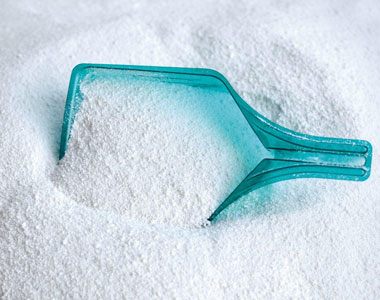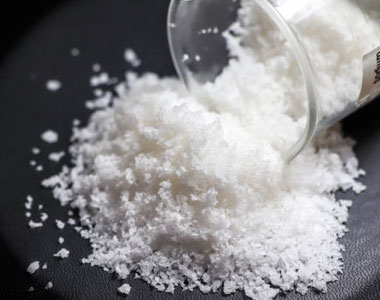Soda Ash (Sodium Carbonate)
Soda Ash known as sodium carbonate, Na2CO3•10H2O, (also known as washing soda, and soda crystals) is the inorganic compound with the formula Na2CO3 and its various hydrates. All forms are white, odourless, water-soluble salts that yield moderately alkaline solutions in water. Historically, it was extracted from the ashes of plants growing in sodium-rich soils. Because the ashes of these sodium-rich plants were noticeably different from ashes of wood (once used to produce potash), sodium carbonate became known as "soda ash".[13] It is produced in large quantities from sodium chloride and limestone by the Solvay process.
Application of The Product :
Glass Manufacturing :
Soda Ash serves as a flux for silica, lowering the melting point of the mixture to something achievable without special materials. This "soda glass" is mildly water-soluble, so some calcium carbonate is added to the melt mixture to make the glass insoluble. Bottle and window glass (soda-lime glass) is made by melting such mixtures of sodium carbonate, calcium carbonate, and silica sand (silicon dioxide (SiO2)). When these materials are heated, the carbonates release carbon dioxide. In this way, sodium carbonate is a source of sodium oxide. Soda-lime glass has been the most common form of glass for centuries.
Water softening :
Hard water contains dissolved compounds, usually calcium or magnesium compounds. Sodium carbonate is used for removing temporary and permanent hardness of water.
Food Additive and Cooking :
Soda Ash has several uses in cuisine, largely because it is a stronger base than baking soda (sodium bicarbonate) but weaker than lye. Alkalinity affects gluten production in kneaded doughs, and also improves browning by reducing the temperature at which the Maillard reaction occurs.
Miscellaneous :
Soda Ash is also used as a relatively strong base in various fields. As a common alkali, it is preferred in many chemical processes because it is cheaper than sodium hydroxide and far safer to handle. Soda Ash is also used by the brick industry as a wetting agent to reduce the amount of water needed to extrude the clay. In casting, it is referred to as "bonding agent" and is used to allow wet alginate to adhere to gelled alginate.



